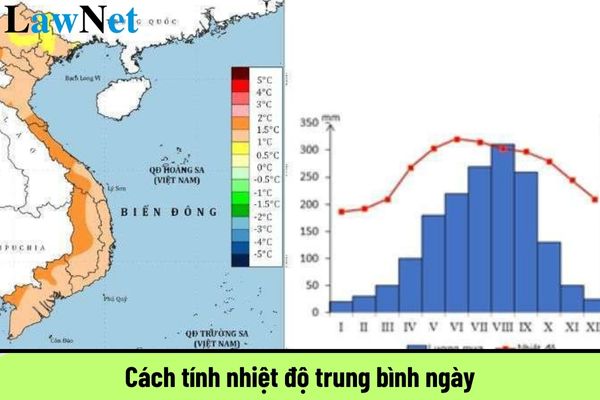How to calculate the average daily temperature? What are the perspectives on developing the History and Geography curricula at the lower secondary level in Vietnam?
How to calculate the average daily temperature?
To calculate the average daily temperature, we use the formula:
Average daily temperature = Total temperature from all measurements during the day/number of measurements.
Students may refer to additional information on calculating the average daily temperature below:
|
Why should we calculate the average daily temperature? Climate evaluation: Helps us better understand the climatic conditions of a location, especially areas with harsh climates like deserts, polar regions... |
*Note: Information on calculating the average daily temperature is for reference purposes only.

How to calculate the average daily temperature? What are the perspectives on developing the History and Geography curricula at the lower secondary level in Vietnam? (Image from the Internet)
What are the perspectives on developing the History and Geography curricula at the lower secondary level in Vietnam?
Under Section 2 of the General education program for History and Geography issued with Circular 32/2018/TT-BGDDT, the perspectives on developing the History and Geography curricula at the lower secondary level in Vietnam are as follows:
- The curriculum aims to develop scientific thinking in students, enabling them to perceive the world as an integrated entity spanning both space and time based on fundamental knowledge and learning tools of history and geography. This forms and develops specific and general competencies, particularly the ability to apply knowledge and skills in practice and creativity.
- The curriculum inherits and enhances the strengths of the History and Geography subjects in the current general education program and adopts the experience of developing subject curricula from advanced countries worldwide. The subject content ensures students are equipped with foundational, comprehensive, and scientific general knowledge; it aligns with the psychological and cognitive characteristics of students and considers the teaching conditions in Vietnamese schools.
- Historical education content is designed chronologically, from prehistoric times through ancient, medieval, modern, and contemporary periods. Each period integrates world history, regional history, and Vietnamese history. The Geography education content progresses from general geography to regional geography and finally to Vietnamese geography. It emphasizes selecting themes, connecting knowledge and skills to develop abilities in students, while also respecting the scientific characteristics of history and geography.
- The curriculum emphasizes the application of positive teaching methods, highlighted by the use of teaching aids, diversifying teaching methods and assessment of educational results to form and develop qualities and competencies in students.
- The curriculum ensures continuity with the elementary school's History and Geography program and the high school History and Geography programs; it is unified and closely connected among classes, academic levels, and with other subjects and educational activities in the general education program.
- The curriculum is open, allowing for flexible implementation depending on local conditions and student needs (students in difficult regions, students with special support needs,...).
What are the specific duties of lower secondary school students when studying History and Geography?
Under Article 82 of the Education Law 2019, the specific duties of lower secondary school students when studying History and Geography are as follows:
- Perform learning and training tasks according to educational programmes and plans, code of conduct of educational institutions.
- Respect teachers, staff and workers of educational institutions; maintain solidarity and mutual support in learning and training; adhere to rules, charters and regulations of educational institutions; and comply with the law.
- Participate in labour and social activities, environmental protection activities appropriate to their age group, health and ability.
- Preserve and protect properties of educational institutions.
- Contribute to the building, protection and development of the traditions of educational institutions.

